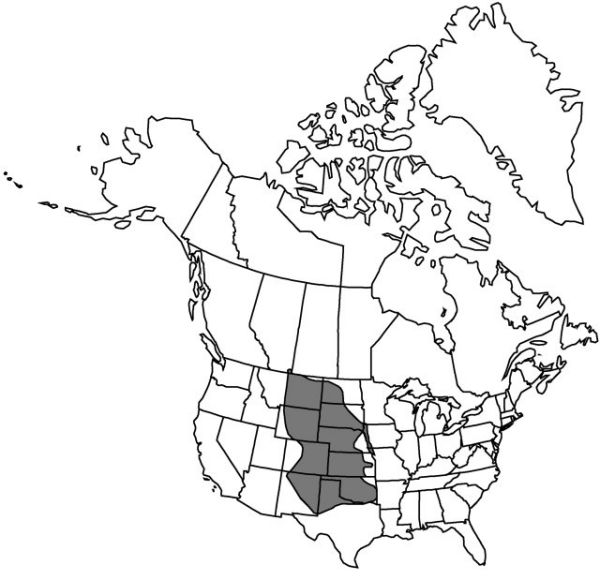Yucca glauca
Cat. Pl. Upper Louisiana, no. 89. 1813.
Plants forming small to moderate colonies, acaulescent or caulescent and arborescent, occasionally branched; rosettes 1–15 per colony, usually small. Stems erect, to 0.4 m. Leaf blade linear to linear-lanceolate, concave to concavo-convex, widest near middle, 40–60 × 0.8–1.2 cm, rigid, margins entire, filiferous, white, apex blunt to acicular. Inflorescences racemose, occasionally paniculate proximally, arising within or just beyond rosettes, 5–10 dm; bracts erect, leaflike, 2–5 cm, reduced toward apex; peduncle scapelike, 0.2–0.5 m, less than 2.5 cm diam. Flowers pendent; tepals distinct, greenish white to white, elliptic, 5–5.3 × 2.6–3.5 cm, apex acute; filaments white, 1.7–1.9 cm; anthers yellow, 4 mm; pistil green, obovoid, 3–3.7 × 1.7 cm; style dark green, 10 mm; stigmas lobed. Fruits erect, capsular, dehiscent, cylindric to obovoid, rarely constricted, 5–8(–9) × 3–4.5(–5) cm, dehiscence septicidal. Seeds black, slightly glossy, thin, 9–12 × 8–9 mm.
Phenology: Flowering spring.
Habitat: Prairies and waste areas in sandy or limestone soils
Elevation: 500–2600 m
Distribution

Alta., Colo., Iowa, Kans., Mo., Mont., Nebr., N.Mex., N.Dak., Okla., S.Dak., Tex., Wyo.
Discussion
Yucca glauca has the most extensive distribution of any North American Yucca. Its inflorescences are primarily racemose, but some plants exhibit branched inflorescences and varietal names have been given them. Yucca glauca and Y. arkansana are very similar. The leaves of Y. glauca are uniform in size, rigid, linear or linear-lanceolate, and up to 1.2 cm wide. In Y. arkansana, the young leaves immediately surrounding the peduncle are distinctly shorter than the outer leaves of the rosette, and mature leaves are generally somewhat flexible, lanceolate, and up to 2.5 cm wide. K. H. Clary’s (1997) DNA evidence does not indicate as close a relationship as the morphological characters suggest. J. M. Webber (1953) believed that Y. glauca forms hybrids with Y. baileyi, Y. elata, Y. constricta, and Y. angustissima.
Selected References
None.